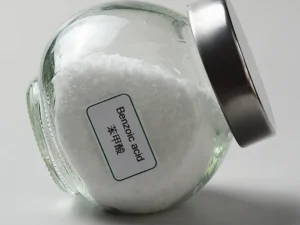Description
Malic Acid: The Tart Powerhouse Found in Apples and Beyond
Malic acid, a dicarboxylic acid naturally found in various fruits and vegetables, is more than just the reason your green apple has that delightful tartness. It plays a crucial role in energy production within our bodies and is gaining attention for its potential health benefits. Let’s delve into the world of malic acid, exploring its sources, functions, and potential applications.
What is Malic Acid?
The name “malic acid” comes from the Latin word “malum,” meaning apple. This is a fitting origin, as apples are a particularly rich source of this organic compound. Chemically, malic acid is a dicarboxylic acid, meaning it has two carboxyl groups (COOH). This structure allows it to participate in important biochemical reactions.
Where is Malic Acid Found?
While apples are the most well-known source, malic acid is prevalent in many fruits and vegetables, including:
- Fruits: Apples, grapes, cherries, peaches, pears, blueberries, raspberries, strawberries
- Vegetables: Rhubarb, carrots, broccoli, tomatoes
Beyond these natural sources, malic acid is also produced synthetically and used in the food and cosmetic industries.
The Role of Malic Acid in Energy Production
Malic acid plays a vital role in the Krebs cycle (also known as the citric acid cycle), a crucial metabolic pathway that generates energy in our cells. It helps convert carbohydrates, fats, and proteins into usable energy in the form of ATP (adenosine triphosphate). Without sufficient malic acid, this process can be impaired, potentially leading to fatigue and muscle weakness.
Potential Health Benefits and Uses
While research is ongoing, malic acid is being investigated for various potential health benefits:
- Fibromyalgia: Some studies suggest that malic acid, often combined with magnesium, may help reduce pain and tenderness associated with fibromyalgia, a chronic condition characterized by widespread musculoskeletal pain accompanied by fatigue, sleep, memory and mood issues. The theory is that malic acid helps restore energy production in muscle cells, alleviating pain.
- Chronic Fatigue Syndrome (CFS): Similar to its potential benefits for fibromyalgia, malic acid is being explored as a possible treatment for CFS, focusing on improving energy levels.
- Skin Health: Malic acid is a popular ingredient in skincare products due to its exfoliating properties. It helps to remove dead skin cells, unclog pores, and improve skin texture, leading to a brighter and more even complexion. It’s often found in peels, cleansers, and lotions.
- Saliva Production: Malic acid can stimulate saliva production, which can be beneficial for individuals with dry mouth (xerostomia). This increased saliva helps protect against dental problems like cavities.
- Enhanced Nutrient Absorption: Some studies suggest that malic acid may enhance the absorption of certain minerals, such as magnesium, supporting overall health and well-being.
Malic Acid in Food and Cosmetics
Beyond its potential health benefits, malic acid is widely used as a food additive for its:
- Tartness: It contributes to the tangy flavor of many candies, fruit juices, and other processed foods.
- Acidity Regulator: It helps maintain the desired pH level in food and beverages.
- Flavor Enhancer: It can enhance the flavor profile of various food products.
In cosmetics, malic acid is used as:
- Exfoliant: Removing dead skin cells.
- pH Adjuster: Helping maintain the correct pH balance in skincare products.
Safety Considerations
Malic acid is generally considered safe for consumption and topical application when used as directed. However, some individuals may experience mild side effects, such as:
- Digestive Upset: High doses may cause nausea, diarrhea, or stomach cramps.
- Skin Irritation: In some individuals, topical application may cause redness, itching, or mild burning.
It is always recommended to consult with a healthcare professional before taking malic acid supplements, especially if you have any underlying health conditions or are taking other medications.
Conclusion
Malic acid is a fascinating organic compound with a wide range of applications. From contributing to the tart flavor of apples to playing a critical role in energy production and offering potential health benefits, its impact is undeniable. As research continues to uncover more about its properties and potential uses, malic acid is likely to remain a valuable ingredient in the food, cosmetic, and potentially even the healthcare industries.












Reviews
There are no reviews yet.